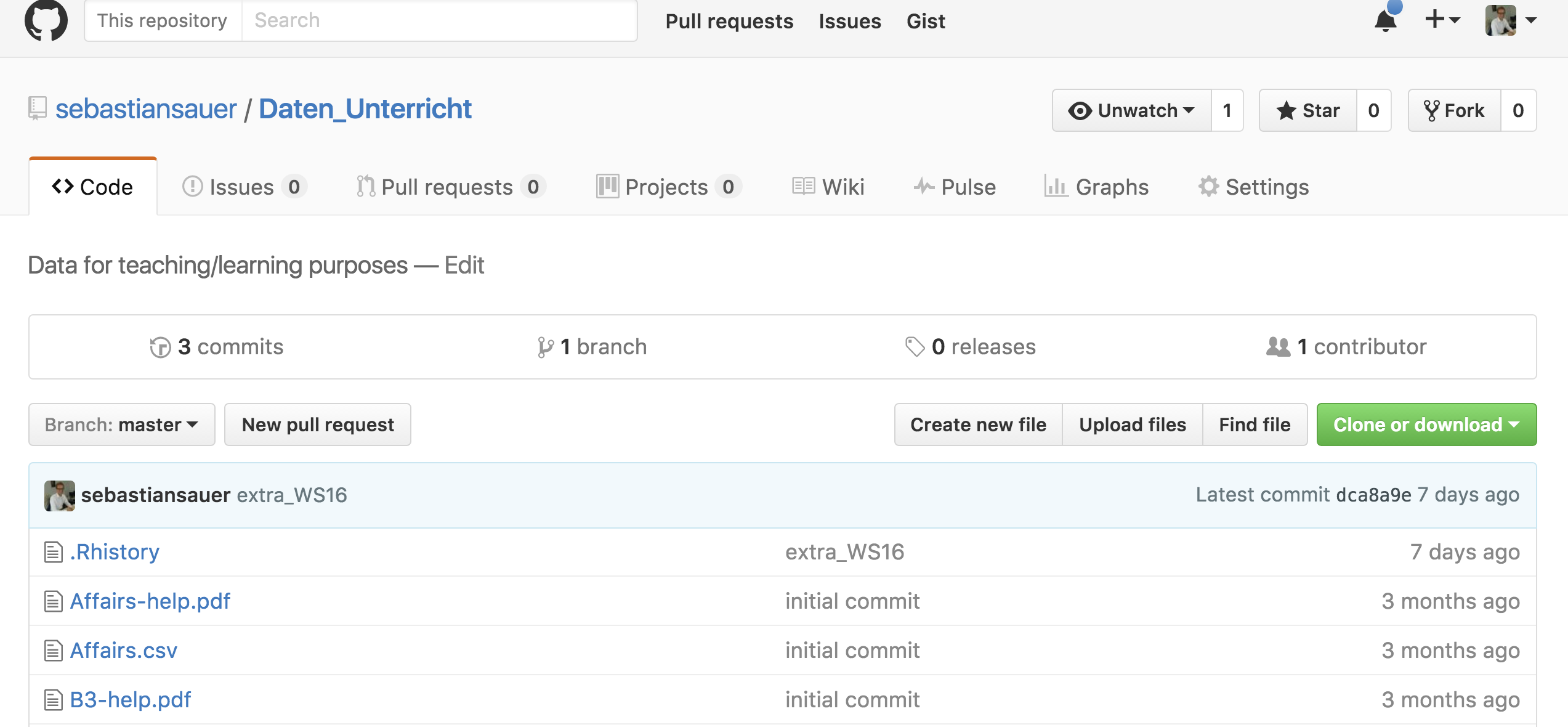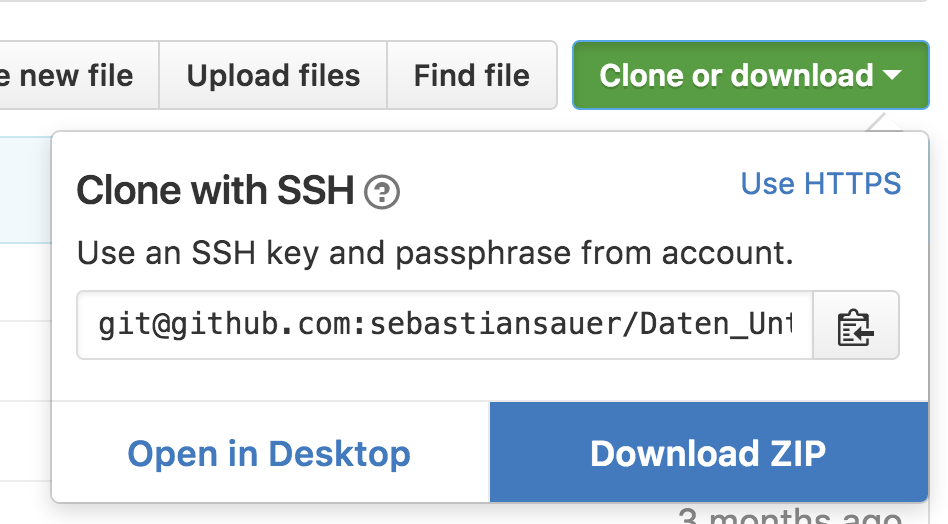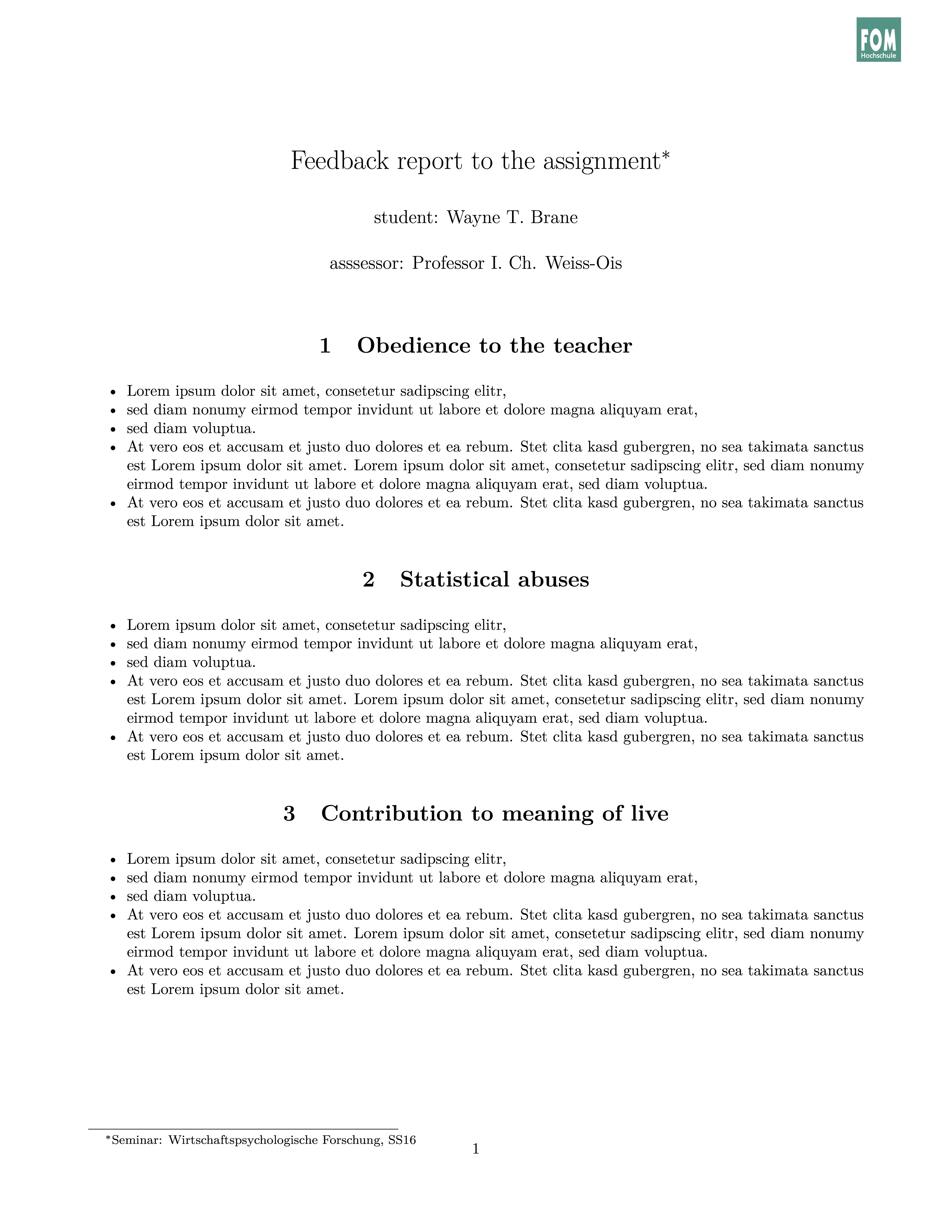I just tried to accomplish the following with R: Compute effect sizes for a variable between two groups. Actually, not one numeric variable but many. And compute not only one measure of effect size but several (d, lower/upper CI, CLES,…).
So how to do that?
First, let’s load some data and some (tidyverse and effect size) packages:
knitr::opts_chunk$set(echo = TRUE, cache = FALSE, message = FALSE)
library(purrr)
library(ggplot2)
library(dplyr)
library(broom)
library(tibble)
library(compute.es)
data(Fair, package = "Ecdat") # extramarital affairs dataset
glimpse(Fair)
## Observations: 601
## Variables: 9
## $ sex <fctr> male, female, female, male, male, female, female, ...
## $ age <dbl> 37, 27, 32, 57, 22, 32, 22, 57, 32, 22, 37, 27, 47,...
## $ ym <dbl> 10.00, 4.00, 15.00, 15.00, 0.75, 1.50, 0.75, 15.00,...
## $ child <fctr> no, no, yes, yes, no, no, no, yes, yes, no, yes, y...
## $ religious <int> 3, 4, 1, 5, 2, 2, 2, 2, 4, 4, 2, 4, 5, 2, 4, 1, 2, ...
## $ education <dbl> 18, 14, 12, 18, 17, 17, 12, 14, 16, 14, 20, 18, 17,...
## $ occupation <int> 7, 6, 1, 6, 6, 5, 1, 4, 1, 4, 7, 6, 6, 5, 5, 5, 4, ...
## $ rate <int> 4, 4, 4, 5, 3, 5, 3, 4, 2, 5, 2, 4, 4, 4, 4, 5, 3, ...
## $ nbaffairs <dbl> 0, 0, 0, 0, 0, 0, 0, 0, 0, 0, 0, 0, 0, 0, 0, 0, 0, ...
Extract the numeric variables:
Fair %>%
select_if(is.numeric) %>% names -> Fair_num
Fair_num
## [1] "age" "ym" "religious" "education" "occupation"
## [6] "rate" "nbaffairs"
Now suppose we want to compare men and women (people do that all the time). First, we do a t-test for each numeric variable (and save the results):
Fair %>%
select(one_of(Fair_num)) %>%
map(~t.test(. ~ Fair$sex)) -> Fair_t_test
The resulting variable is a list of t-test-results (each a list again). Let’s have a look at one of the t-test results:
##
## Welch Two Sample t-test
##
## data: . by Fair$sex
## t = -4.7285, df = 575.26, p-value = 2.848e-06
## alternative hypothesis: true difference in means is not equal to 0
## 95 percent confidence interval:
## -5.014417 -2.071219
## sample estimates:
## mean in group female mean in group male
## 30.80159 34.34441
That’s the structure of a t-test result object (one element of Fair_t_test
):
## List of 9
## $ statistic : Named num -4.73
## ..- attr(*, "names")= chr "t"
## $ parameter : Named num 575
## ..- attr(*, "names")= chr "df"
## $ p.value : num 2.85e-06
## $ conf.int : atomic [1:2] -5.01 -2.07
## ..- attr(*, "conf.level")= num 0.95
## $ estimate : Named num [1:2] 30.8 34.3
## ..- attr(*, "names")= chr [1:2] "mean in group female" "mean in group male"
## $ null.value : Named num 0
## ..- attr(*, "names")= chr "difference in means"
## $ alternative: chr "two.sided"
## $ method : chr "Welch Two Sample t-test"
## $ data.name : chr ". by Fair$sex"
## - attr(*, "class")= chr "htest"
So we see that t-value itself can be accessed with eg., Fair_t_test[[1]]$statistic. The t-value is now fed into a function that computes effect sizes.
Fair_t_test %>%
map(~tes(.$statistic,
n.1 = nrow(filter(Fair, sex == "female")),
n.2 = nrow(filter(Fair, sex == "male")))) -> Fair_effsize
## Mean Differences ES:
##
## d [ 95 %CI] = -0.39 [ -0.55 , -0.22 ]
## var(d) = 0.01
## p-value(d) = 0
## U3(d) = 34.97 %
## CLES(d) = 39.24 %
## Cliff's Delta = -0.22
##
## g [ 95 %CI] = -0.39 [ -0.55 , -0.22 ]
## var(g) = 0.01
## p-value(g) = 0
## U3(g) = 34.99 %
## CLES(g) = 39.25 %
##
## Correlation ES:
##
## r [ 95 %CI] = 0.19 [ 0.11 , 0.27 ]
## var(r) = 0
## p-value(r) = 0
##
## z [ 95 %CI] = 0.19 [ 0.11 , 0.27 ]
## var(z) = 0
## p-value(z) = 0
##
## Odds Ratio ES:
##
## OR [ 95 %CI] = 0.5 [ 0.37 , 0.67 ]
## p-value(OR) = 0
##
## Log OR [ 95 %CI] = -0.7 [ -0.99 , -0.41 ]
## var(lOR) = 0.02
## p-value(Log OR) = 0
##
## Other:
##
## NNT = -11.08
## Total N = 601Mean Differences ES:
##
## d [ 95 %CI] = -0.06 [ -0.22 , 0.1 ]
## var(d) = 0.01
## p-value(d) = 0.46
## U3(d) = 47.58 %
## CLES(d) = 48.29 %
## Cliff's Delta = -0.03
##
## g [ 95 %CI] = -0.06 [ -0.22 , 0.1 ]
## var(g) = 0.01
## p-value(g) = 0.46
## U3(g) = 47.59 %
## CLES(g) = 48.29 %
##
## Correlation ES:
##
## r [ 95 %CI] = 0.03 [ -0.05 , 0.11 ]
## var(r) = 0
## p-value(r) = 0.46
##
## z [ 95 %CI] = 0.03 [ -0.05 , 0.11 ]
## var(z) = 0
## p-value(z) = 0.46
##
## Odds Ratio ES:
##
## OR [ 95 %CI] = 0.9 [ 0.67 , 1.2 ]
## p-value(OR) = 0.46
##
## Log OR [ 95 %CI] = -0.11 [ -0.4 , 0.18 ]
## var(lOR) = 0.02
## p-value(Log OR) = 0.46
##
## Other:
##
## NNT = -60.47
## Total N = 601Mean Differences ES:
##
## d [ 95 %CI] = -0.02 [ -0.18 , 0.15 ]
## var(d) = 0.01
## p-value(d) = 0.85
## U3(d) = 49.39 %
## CLES(d) = 49.57 %
## Cliff's Delta = -0.01
##
## g [ 95 %CI] = -0.02 [ -0.18 , 0.14 ]
## var(g) = 0.01
## p-value(g) = 0.85
## U3(g) = 49.39 %
## CLES(g) = 49.57 %
##
## Correlation ES:
##
## r [ 95 %CI] = 0.01 [ -0.07 , 0.09 ]
## var(r) = 0
## p-value(r) = 0.85
##
## z [ 95 %CI] = 0.01 [ -0.07 , 0.09 ]
## var(z) = 0
## p-value(z) = 0.85
##
## Odds Ratio ES:
##
## OR [ 95 %CI] = 0.97 [ 0.73 , 1.3 ]
## p-value(OR) = 0.85
##
## Log OR [ 95 %CI] = -0.03 [ -0.32 , 0.26 ]
## var(lOR) = 0.02
## p-value(Log OR) = 0.85
##
## Other:
##
## NNT = -234.86
## Total N = 601Mean Differences ES:
##
## d [ 95 %CI] = -0.86 [ -1.03 , -0.69 ]
## var(d) = 0.01
## p-value(d) = 0
## U3(d) = 19.52 %
## CLES(d) = 27.18 %
## Cliff's Delta = -0.46
##
## g [ 95 %CI] = -0.86 [ -1.03 , -0.69 ]
## var(g) = 0.01
## p-value(g) = 0
## U3(g) = 19.54 %
## CLES(g) = 27.2 %
##
## Correlation ES:
##
## r [ 95 %CI] = 0.39 [ 0.32 , 0.46 ]
## var(r) = 0
## p-value(r) = 0
##
## z [ 95 %CI] = 0.42 [ 0.34 , 0.5 ]
## var(z) = 0
## p-value(z) = 0
##
## Odds Ratio ES:
##
## OR [ 95 %CI] = 0.21 [ 0.16 , 0.29 ]
## p-value(OR) = 0
##
## Log OR [ 95 %CI] = -1.56 [ -1.86 , -1.25 ]
## var(lOR) = 0.02
## p-value(Log OR) = 0
##
## Other:
##
## NNT = -6.43
## Total N = 601Mean Differences ES:
##
## d [ 95 %CI] = -1.08 [ -1.25 , -0.91 ]
## var(d) = 0.01
## p-value(d) = 0
## U3(d) = 13.95 %
## CLES(d) = 22.2 %
## Cliff's Delta = -0.56
##
## g [ 95 %CI] = -1.08 [ -1.25 , -0.91 ]
## var(g) = 0.01
## p-value(g) = 0
## U3(g) = 13.98 %
## CLES(g) = 22.22 %
##
## Correlation ES:
##
## r [ 95 %CI] = 0.48 [ 0.41 , 0.54 ]
## var(r) = 0
## p-value(r) = 0
##
## z [ 95 %CI] = 0.52 [ 0.44 , 0.6 ]
## var(z) = 0
## p-value(z) = 0
##
## Odds Ratio ES:
##
## OR [ 95 %CI] = 0.14 [ 0.1 , 0.19 ]
## p-value(OR) = 0
##
## Log OR [ 95 %CI] = -1.96 [ -2.28 , -1.65 ]
## var(lOR) = 0.03
## p-value(Log OR) = 0
##
## Other:
##
## NNT = -5.79
## Total N = 601Mean Differences ES:
##
## d [ 95 %CI] = 0.02 [ -0.15 , 0.18 ]
## var(d) = 0.01
## p-value(d) = 0.85
## U3(d) = 50.6 %
## CLES(d) = 50.43 %
## Cliff's Delta = 0.01
##
## g [ 95 %CI] = 0.02 [ -0.15 , 0.18 ]
## var(g) = 0.01
## p-value(g) = 0.85
## U3(g) = 50.6 %
## CLES(g) = 50.43 %
##
## Correlation ES:
##
## r [ 95 %CI] = 0.01 [ -0.07 , 0.09 ]
## var(r) = 0
## p-value(r) = 0.85
##
## z [ 95 %CI] = 0.01 [ -0.07 , 0.09 ]
## var(z) = 0
## p-value(z) = 0.85
##
## Odds Ratio ES:
##
## OR [ 95 %CI] = 1.03 [ 0.77 , 1.37 ]
## p-value(OR) = 0.85
##
## Log OR [ 95 %CI] = 0.03 [ -0.26 , 0.32 ]
## var(lOR) = 0.02
## p-value(Log OR) = 0.85
##
## Other:
##
## NNT = 235.02
## Total N = 601Mean Differences ES:
##
## d [ 95 %CI] = -0.02 [ -0.18 , 0.14 ]
## var(d) = 0.01
## p-value(d) = 0.77
## U3(d) = 49.06 %
## CLES(d) = 49.34 %
## Cliff's Delta = -0.01
##
## g [ 95 %CI] = -0.02 [ -0.18 , 0.14 ]
## var(g) = 0.01
## p-value(g) = 0.77
## U3(g) = 49.07 %
## CLES(g) = 49.34 %
##
## Correlation ES:
##
## r [ 95 %CI] = 0.01 [ -0.07 , 0.09 ]
## var(r) = 0
## p-value(r) = 0.77
##
## z [ 95 %CI] = 0.01 [ -0.07 , 0.09 ]
## var(z) = 0
## p-value(z) = 0.77
##
## Odds Ratio ES:
##
## OR [ 95 %CI] = 0.96 [ 0.72 , 1.28 ]
## p-value(OR) = 0.77
##
## Log OR [ 95 %CI] = -0.04 [ -0.33 , 0.25 ]
## var(lOR) = 0.02
## p-value(Log OR) = 0.77
##
## Other:
##
## NNT = -153.72
## Total N = 601
The resulting object (Fair_effsize) is a list where each list element is the output of the tes function. Let’s have a look at one of these list elements:
## N.total n.1 n.2 d var.d l.d u.d U3.d cl.d cliffs.d pval.d
## t 601 315 286 -0.39 0.01 -0.55 -0.22 34.97 39.24 -0.22 0
## g var.g l.g u.g U3.g cl.g pval.g r var.r l.r u.r pval.r
## t -0.39 0.01 -0.55 -0.22 34.99 39.25 0 0.19 0 0.11 0.27 0
## fisher.z var.z l.z u.z OR l.or u.or pval.or lOR l.lor u.lor pval.lor
## t 0.19 0 0.11 0.27 0.5 0.37 0.67 0 -0.7 -0.99 -0.41 0
## NNT
## t -11.08
## 'data.frame': 1 obs. of 36 variables:
## $ N.total : num 601
## $ n.1 : num 315
## $ n.2 : num 286
## $ d : num -0.39
## $ var.d : num 0.01
## $ l.d : num -0.55
## $ u.d : num -0.22
## $ U3.d : num 35
## $ cl.d : num 39.2
## $ cliffs.d: num -0.22
## $ pval.d : num 0
## $ g : num -0.39
## $ var.g : num 0.01
## $ l.g : num -0.55
## $ u.g : num -0.22
## $ U3.g : num 35
## $ cl.g : num 39.2
## $ pval.g : num 0
## $ r : num 0.19
## $ var.r : num 0
## $ l.r : num 0.11
## $ u.r : num 0.27
## $ pval.r : num 0
## $ fisher.z: num 0.19
## $ var.z : num 0
## $ l.z : num 0.11
## $ u.z : num 0.27
## $ OR : num 0.5
## $ l.or : num 0.37
## $ u.or : num 0.67
## $ pval.or : num 0
## $ lOR : num -0.7
## $ l.lor : num -0.99
## $ u.lor : num -0.41
## $ pval.lor: num 0
## $ NNT : num -11.1
The element itself is a data frame with n=1 and p=36. So we could nicely row-bind these 36 rows into one data frame. How to do that?
Fair_effsize %>%
map( ~do.call(rbind, .)) %>%
as.data.frame -> Fair_effsize_df
head(Fair_effsize_df)
## age ym religious education occupation rate nbaffairs
## N.total 601.00 601.00 601.00 601.00 601.00 601.00 601.00
## n.1 315.00 315.00 315.00 315.00 315.00 315.00 315.00
## n.2 286.00 286.00 286.00 286.00 286.00 286.00 286.00
## d -0.39 -0.06 -0.02 -0.86 -1.08 0.02 -0.02
## var.d 0.01 0.01 0.01 0.01 0.01 0.01 0.01
## l.d -0.55 -0.22 -0.18 -1.03 -1.25 -0.15 -0.18
What we did here is:
- Take each list element and then… (that was
map)
- bind these elements row-wise together, ie,. “underneath” each other (
rbind). do.call is only a helper that allows to hand over to rbind a bunch of rows.
- Then convert this element, still a list, to a data frame (not much changes in effect)
Finally, let’s convert the row names to a column:
Fair_effsize_df %>%
rownames_to_column -> Fair_effsize_df
head(Fair_effsize_df)
## rowname age ym religious education occupation rate nbaffairs
## 1 N.total 601.00 601.00 601.00 601.00 601.00 601.00 601.00
## 2 n.1 315.00 315.00 315.00 315.00 315.00 315.00 315.00
## 3 n.2 286.00 286.00 286.00 286.00 286.00 286.00 286.00
## 4 d -0.39 -0.06 -0.02 -0.86 -1.08 0.02 -0.02
## 5 var.d 0.01 0.01 0.01 0.01 0.01 0.01 0.01
## 6 l.d -0.55 -0.22 -0.18 -1.03 -1.25 -0.15 -0.18
A bit of a ride, but we got there!
And I am sure, better ways are out there. Let me know!




